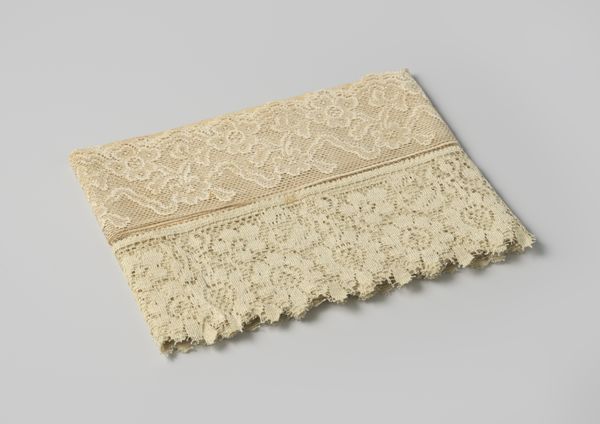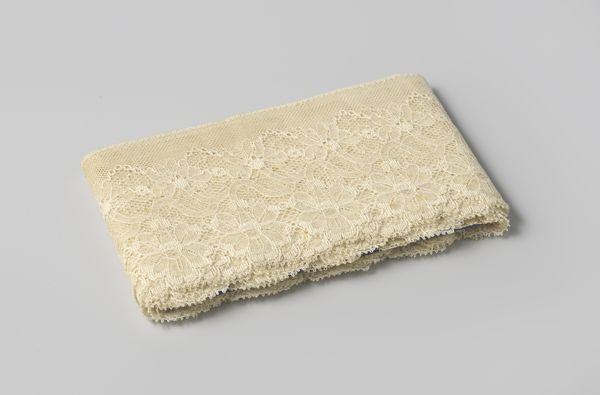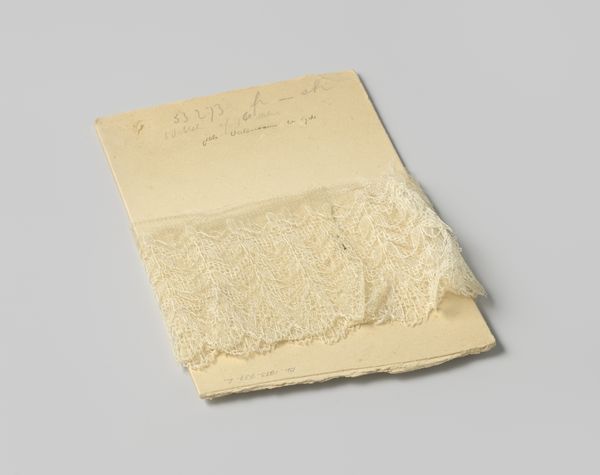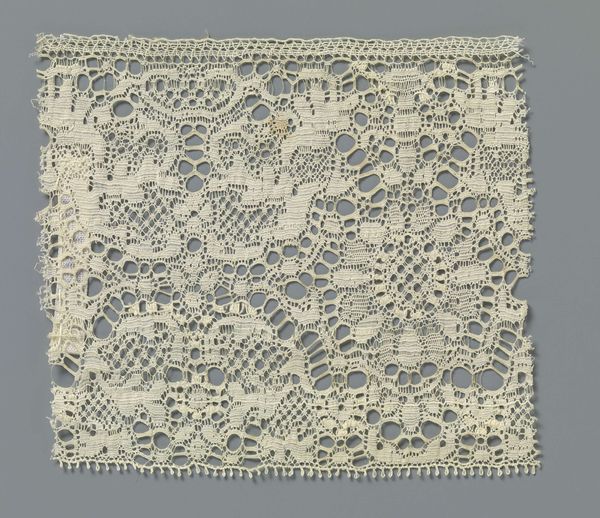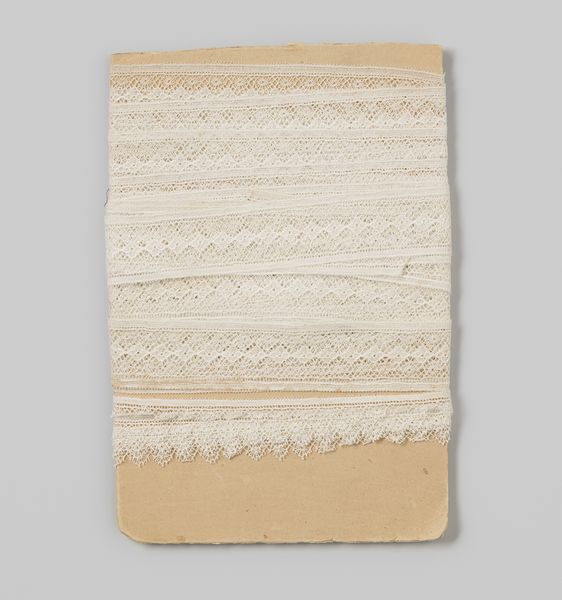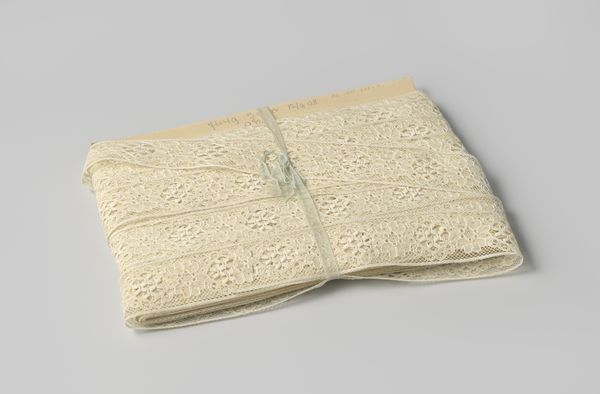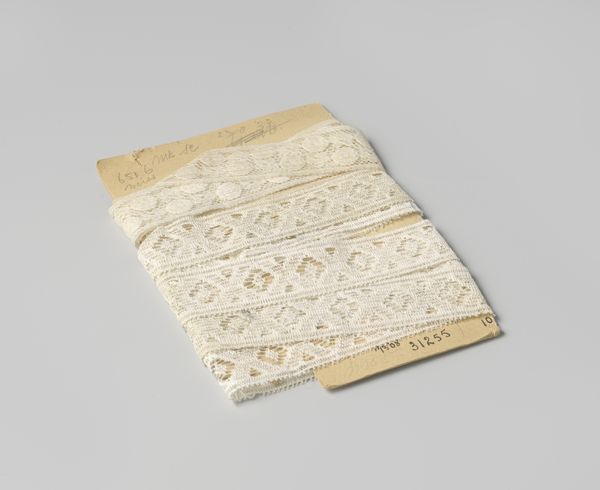
textile, photography
#
textile
#
photography
Dimensions: width 5.5 cm, length 24 cm, width 17.5 cm
Copyright: Rijks Museum: Open Domain
Curator: The Rijksmuseum holds this delicate strip of white, machine-made lace dating back to approximately 1925. It's mounted on cardboard, and the scalloped edge adds a gentle rhythm to its form. What do you make of it? Editor: There's something hauntingly fragile about it. The creamy, aged tone speaks to a time gone by, whispering stories of bridal veils or elegant garments... perhaps a stark reminder of how quickly delicate artistry can fade into mere artifact. Curator: That sense of faded elegance rings true. Lace, historically, has been so deeply interwoven with social status, a symbol of luxury achievable only through immense labor or, eventually, through technological advancement. Here, we see the product of a machine, yet it strives for that handmade aesthetic. Editor: Indeed. And in the 1920s, that shift from hand to machine would've carried its own weight, signaling the democratization of luxury, but perhaps also the erosion of artisanal traditions. Curator: Precisely. The very pattern woven into the lace could also suggest deeper symbolism, hinting at interconnectedness or hidden depths beneath the surface. Even the scalloped edge gives a feeling, mimicking natural, organic forms and suggesting a desire for grace and elegance during a period of massive social change. Editor: It's interesting to consider how this fragment, now displayed behind glass, represents larger societal movements. The politics of lace – who makes it, who wears it – reveal a complicated history. Curator: Absolutely. This little scrap acts almost as a document of evolving notions of value, of labour, and even beauty itself. Machine made, mass produced, but still with aspirations for a timeless appeal. Editor: It also reveals much about material culture – to what extent have textiles defined historical social structures? Considering all these details enhances our awareness that, sometimes, beauty has an insidious nature because of its origins. Curator: A beautifully poignant and necessary conclusion. Thank you for these insights. Editor: My pleasure. Thinking about it, this fragment’s ability to still evoke such emotions and provoke thought nearly a century later gives this forgotten lace an unexpected immortality.
Comments
No comments
Be the first to comment and join the conversation on the ultimate creative platform.






